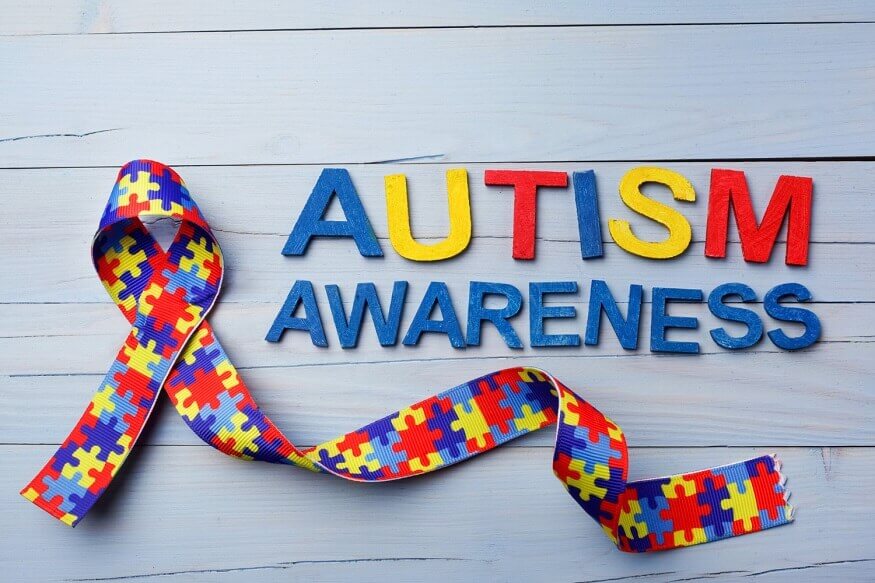Autism Spectrum Disorder (ASD) is a neurodevelopmental disorder that impairs an individual’s communication skills, social interactions, or behaviours. ASD can make it hard for people to communicate, interact with others, and behave in expected ways. For parents and teachers, it is important to understand the intricacies of ASD so they can help children with autism in school.
Autism shows up in different ways, like difficulty with talking to others, understanding nonverbal cues, and doing the same things repeatedly. Using effective teaching methods for autism in class can help children learn and make friends better.
This blog offers teaching strategies for students with autism that educators can use to support them in the classroom.
Also Read: Assessment of Scholastic Skills through Educational Testing
Autism teaching strategies
1) Applied Behaviour Analysis (ABA)
ABA uses principles of learning and behaviour to study behaviour and its responses within the environment, thereby cultivating socially significant behaviours.
ABA is a specific type of therapy grounded in the principles of behaviourist theories, which postulate that desired behaviours can be promoted through a system of rewards.
It operates by customising interventions according to the individual needs of a child with ASD. It requires making a comprehensive plan based on an individual’s skills, needs, interests, and family situation. This plan typically involves observation, measurement and functional analysis of the relationship between environment and behaviour.
While ABA therapy is not a cure for autism, the primary objective of ABA therapy for autism is to enhance communication, social interactions, attention, focus, academics, and daily life skills while reducing interfering behaviours
With appropriate implementation and consistency, ABA therapy can help children with autism lead fuller lives, engaging better with their environments and the people around them.
Also Read: Remedial Teaching: Why You Need to Know About It
2) Structured Teaching
Developed by TEACCH (Treatment and Education for Autistic and Communicatively Handicapped Children), the method is based on understanding autism and its characteristics. Hence, it includes physical organisation, predictable schedules, work systems, and visual structures to teach and guide children with autism.
Children with autism often thrive in structured environments. By having clear routines and guidelines in place, educators can provide predictable environments that can help minimise anxiety or stress. Visual schedules, predictable routines, and clear rules can be useful tools for promoting structure.
Structured teaching provides clear boundaries that provide students with a concrete understanding of where various tasks should occur. It is also essential in helping them comprehend what activities will follow in sequence. By doing so, it reduces their propensity for stress and anxiety which could arise from sudden changes.
This teaching strategy must be individualised for each learner, considering their unique strengths, skills, and areas of difficulty.
3) Picture Exchange Communication System (PECS)
This method uses pictures to help children communicate their needs and desires. Developed in 1985 by Andy Bondy and Lori Frost, PECS is an augmentative/alternative communication intervention package.
PECS is primarily composed of six phases that aim to develop the communication skills of those with autism step by step. These steps range from simple requests for items to making complex sentences and comments. The advantage of PECS is that it is grounded in the principles of applied behaviour analysis (ABA).
The first phase of PECS involves the physical exchange of pictures. A child with autism is taught to provide a picture of a desired item to a partner in exchange for the desired item. Short, tangible, and immediate rewards are an important part of this phase.
In the second phase, the child learns to initiate the use of pictures in different environments and situations without any specific prompts.
Phase three focuses on picture discrimination. The child learns to select a picture of a wanted item from among several options, increasing the complexity of the choice.
In the fourth phase, sentence structure is introduced via sentence strips. The child learns to construct simple sentences by adding the word “I want” before the picture of the desired item.
The fifth phase is all about responding to questions. Here, the child learns to use PECS pictures to respond appropriately to the question, what do you want?
The final phase is focused on comment initiation. Children are taught how to comment spontaneously about the things they see around them.
Also Read: Role of Textbook in Language Teaching and Learning
4) Social Stories
Introduced by Carol Gray in 1991, Social Stories present accurate information about situations that children may find difficult or confusing. They help these children understand how to act or respond in such situations.
Working on building social skills is a crucial component of supporting children with autism in the classroom. As social cues may often be challenging for these children, role-playing, social stories, and explicit instruction can be beneficial in promoting social interactions and friendships.
Inclusive and collaborative learning activities promote interaction with peers, which helps in developing their social skills. For example, group projects or team-based learning activities can encourage interaction and cooperation among students.
5) Sensory Integration
Children with ASD often face challenges with sensory integration, which can lead to extreme responses to certain stimuli. Sensory integration therapy puts to use activities that challenge a child’s ability to respond appropriately to sensory input. Therapists often use this approach for children with autism who are overly sensitive or under-responsive to sensory stimuli
Sensory integration therapy can assist these students in better managing their physiological responses. To make classrooms more sensory-sensitive, educators can use appropriate lighting, noise, and seating arrangements.
Effectiveness of Teaching Methods
Each teaching strategy for autism is backed by empirical evidence of its efficacy within the autism pedagogy. For example, ABA teaching methods such as discrete trial training (DTT) have shown remarkable efficiency in teaching academic, communication, play, social, and self-help skills to these children. Similarly, the structured teaching method aims to translate the culture of autism into concrete strategies conducive to their learning, leading to improvements in adapting and understanding their environment.
Additionally, PECS fosters initiative communication with low proficiency skills and increases social-communicative behaviours. Social stories, on the other hand, are crucial in developing social understanding, particularly regarding complex or abstract social concepts. Lastly, sensory integration therapy shows promising results in reducing problem behaviours and improving performance.
Parents and caregivers can be valuable allies in supporting children with ASD in the classroom. Regular communication with parents can offer insights into the child’s challenges, strengths, and effective strategies at home. Involving specialists like occupational therapists, speech therapists, or school psychologists can also enhance the supportive efforts in school.
Also Read: Why Teaching Kids Life Skills Is As Important As Academics
Conclusion
Children with autism have unique learning needs. Offering diverse teaching methods that align with their needs can dramatically enhance their behavioural, communicative, and adaptive skills. Moreover, working closely with trained behavioural and occupational therapists and educators who understand the child’s personality traits and characteristics is essential for their growth and development.










